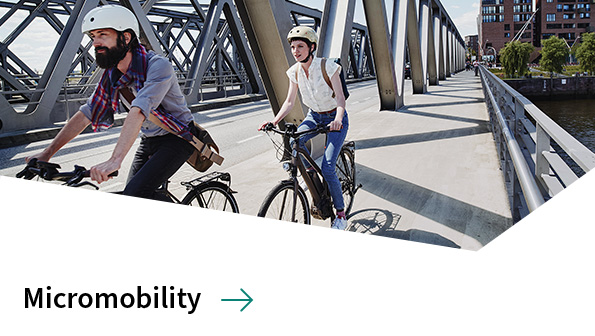
Electrified transportation
Making heavy-duty vehicles clean, safe and smart
The functioning transport of goods to all parts of the world is the backbone of international trade and a prospering global economy. Infineon semiconductor solutions for both Battery Electric Vehicles (BEV) and Hydrogen Fuel Cell Electric Vehicles (FCEV) help make trucks, buses and agricultural vehicles emission-free.
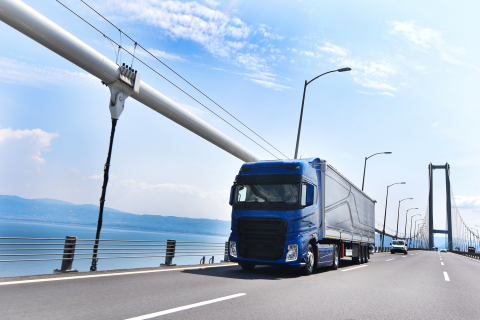
Freight transport causes a high percentage of vehicle emissions. The electrification of vehicle classes in this area is therefore a central building block in the current efforts towards green mobility. In this transformation, Infineon is a key enabler of electric vehicles, including freight transport. To make sustainable mobility work here, battery electric vehicles as well as hydrogen-based fuel-cell electric drives will be needed, and both will have to use energy generated from renewable sources.
Digital technologies including semiconductors play a key role in the ongoing "smartification" of freight vehicles by applying sensor solutions and reliable connectivity. Infineon helps to engineer designs for this kind of vehicles with proven expertise and a comprehensive portfolio of robust, high-quality control and power semiconductor solutions.
High demands on robustness
Power electronics in freight vehicles such as e-trucks are exposed to extreme loads. Their requirements differ significantly from those of a passenger car. Whereas a passenger car runs for an average of 4,000 operating hours in ten years, a truck or bus used in shift work reaches 100,000 hours after 15 to 20 years, a major challenge for the electric drive. As a market leader in power semiconductors Infineon is at the core of all types of vehicles and infrastructure systems engaged in international freight transport and logistics.
The need for robustness results, among other things, in the special design of the Electric Control Units (ECU). The ECU has to handle a lot, in spite of constantly lower space availability on the circuit board. Meeting these requirements calls for easy to integrate products specially designed for 24V systems. They must come from a source with proven expertise in such applications. Infineon is the partner of choice here due to special portfolio of scalable high-side switches for 24V systems, with maximum design flexibility and compatibility.
Experience our interactive etruck and find all information for your CAV design requirements
Hydrogen
Hydrogen-powered fuel cell electric CAVs
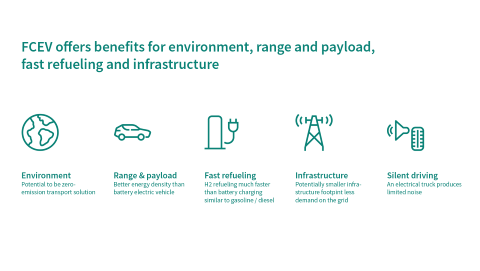
Commercial, Construction and Agricultural vehicles (CAV) with fuel-cells use hydrogen gas to power an electric motor. They combine hydrogen and oxygen to produce electricity to run a motor. While still in an early development phase with challenges still to be tackled, fuel cell technology is expected to generate a lot of benefits.
Read more about Fuel-cell electric vehicle (FCEV) drivetrain system
and visit our application page: Commercial, construction and agricultural vehicles
Battery and Hydrogen Fuel Cell vehicles
The mobility transformation needs both - BEV and FCEV

Hydrogen and battery vehicles will co-exist, for different applications. In general, the hydrogen-based fuel cell drive is expected to be the preferred option for heavier loads and longer distances, e.g. when battery charging infrastructure is limited. At the same time, battery electric drives will become the predominant solution for light commercial and passenger vehicles with ranges of up to 400 km.
Read more
Autonomous trucks
The vision: Fully autonomous trucks on the rise
The long-term mobility trends in freight transport point clearly in the direction of autonomous driving, enabling even more energy efficiency and sustainable mobility. Even if fully automated driving still has challenges to overcome such as security and regulatory issues, self-driving vehicles are already in use, for instance in port terminals, in high-bay warehouses and at airports. And the mobility landscape will change further: More and more fleet operators will be switching to autonomous electric mobility.
However, when buying an e-truck, an important factor in the purchase decision is the total cost of ownership. This means the purchase price of the vehicle alone is not the only criterion. Driving times and loading times are essential monetary factors, too. That’s why digital technologies including semiconductor solutions have to make a difference and contribute to the advantages of autonomous driving as one part of sustainable mobility concepts.
Smart trucks
Sensor solutions for smart trucks
While autonomous driving for passenger cars is making small steps forward, the development of self-driving trucks is progressing rapidly. This has a positive impact well beyond driving and rest times. Reloading stops can be planned flexibly; eventually, a driver will become a transport manager of a smart truck park. Once loaded, the trucks will embark on self-optimized journeys – using terrain and traffic-optimized, fuel-saving route guidance, on the road 24 hours a day, 365 days a year.
Sensor solutions are needed for all these services. The extensive “senses” of a smart truck, including multi-purpose cameras and radar, have to be securely integrated in truck designs. Countless environmental data have to be processed error-free and in real time to enable decisions about driving behavior. That’s why semiconductor solutions from Infineon are a key enabler in this field.
Semiconductor solutions
Semiconductor solutions for numerous applications on board
Infineon power solutions are used in commercial, construction and agricultural vehicles such as harvesters, tractors, buses, trucks and mining vehicles.
That’s why Infineon offers solutions across an extremely wide variety of applications. In trucks, for example, these mainly include the electric drivetrain and auxiliary power supplies, but also on-board chargers and wireless power, DC-DC converters, electric pumps and compressors.
Other relevant applications using Infineon semiconductors include the battery-management system, security features such as brake vehicle stability control and “Steer-by-wire – Brake-by-wire”, as well as radar and camera applications. To cover the full spectrum of CAV electrification applications, Infineon’s products comprise everything from Si IGBT and CoolSiC™ MOSFETs and power modules such as EconoDUAL™ and HybridPACK™ Drive to complementary gate drivers, microcontrollers and sensors. The most prominent of Infineon’s IGBTs are the cost-efficient EconoDUALTM 3 half-bridges, rated at up to 900 A and 1700 V.
Explore our portfolio for heavy duty vehicles
CoolSiC™
HybridPACK™ Drive
PrimePACK™.XT
EconoDUAL™
OPTIREG™
OPTIREG™ PMIC
PROFET™
AURIX™
XENSIV™
ATV gate driver
ATV MOSFET
ATV CAN Transceivers
Application page: Hybrid and electric solutions for trucks and agricultural vehicles
Deeper insight: Whitepaper, Podcast4Engineers
Maritime Technology
Powering the future of maritime transportation

The transformation of mobility towards clean, safe, and smart shipping is a crucial aspect of modern maritime applications. Ships currently transport a significant majority of the world's commodities, with the United Nations Conference on Trade and Development reporting that about 80 percent of global goods are transported via maritime routes.
HD KSOE, one of the world's leading shipbuilding and marine companies, focuses on the development of environmentally friendly, decarbonized ship technologies based on electricity and hydrogen.
Together with Infineon they develop propulsion drive technology, a core technology for ship electrification. Infineon offers technical assistance and mentoring on power semiconductors for system power blocks, as well as share information on new semiconductor solutions for marine applications.
Electric and hybrid ships need more efficient and lighter batteries for a breakthrough. While the energy density has increased considerably over the last 30 years, it is not yet enough to supply large ships with energy for long distances. Infineon helps overcome this obstacle: The battery units are becoming smaller and lighter, because the system efficiency is improving. They are utilized better with what is known as battery balancing. That means they work more efficiently. Battery balancing can increase the capacity and life of batteries by more than ten percent.
Discover the power semiconductor-driven innovation with Infineon today.
https://www.infineon.com/cms/en/discoveries/electrified-ships/
Press Release: https://www.infineon.com/cms/en/about-infineon/press/press-releases/2024/INFGIP202403-083.html
Decentralized mirror module
Large side mirrors on commercial vehicles are an extremely important safety feature and are essential for making sure the driver has a good rear and side view.
The digital mirror system replaces the large side mirrors with two interior monitors and two external cameras mounted above the driver's cab. The aerodynamic design reduces fuel consumption by as much as 1-2 %. At the same time, the system improves the driver’s all-around view significantly and reduces the size of the blind spot. Infineon enables these manifold functions with its decentralized Electronic Control Unit.
Supporting Electronic Toll Collection (ETC) systems with secure and reliable solutions
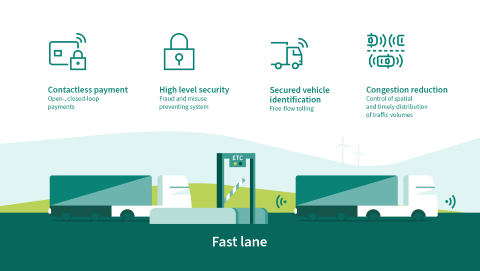
Traffic congestion is one of the biggest challenges of urban living. To address this issue, cities are implementing smart electronic tolling systems. Especially in city centers, charges paid by vehicles entering downtown areas can regulate the distribution of traffic volumes. Infineon’s product portfolio offers reliable solutions with high security standards for optimized support of electronic road tolling schemes. This reduces the risk of fraud and misuse. Regardless of whether the system is integrated in the license plate, attached to the windshield or uses a smart card or wearables – secure and fast vehicle identification allows a free flow of traffic.
Telematics use semiconductor components that deliver performance, interoperability and security
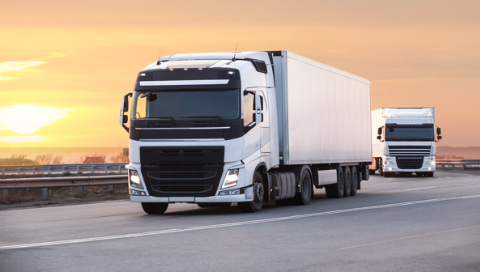
New management systems control several key functions in today’s vehicles such as vehicle telematics (tracking and diagnostics). Telematics connects cars to the cloud, helps keep the driver and passengers safe, optimizes traffic flow and can place an automatic emergency call in the event of an accident. At the heart of this is an embedded hardware and software system, known as the telematics control unit. It uses semiconductor components from Infineon’s product portfolio which give the control unit the necessary flexibility to support different wireless communication standards and optimize security as well as power consumption.
Optimizing Fleet management through telematics
Fleet owners benefit greatly from telematics technology. It allows mechanics, drivers and logistic managers to make decisions regarding fleet optimization. For example, they are able to track in real time where their trucks are and what drivers are doing. They will also be able to see the actual drive time, and in some cases, also unexpected stops that may be track failures or suspicious driver activities.
Read more
The digital Truck-ID
New innovation in progress

The first manufacturers are working on solutions to give trucks a digital ID that can be used to identify them and pay for services. New platform technologies and central user programs allow vehicles to automatically pay for road tolls, electric charging or secure boarder control solutions incl. digital customs documents — without involving or interacting with the driver.
All these factors have an impact on the cost of ownership, because in the future transport companies could benefit from secure processes and significant reduction in administrative work as they would no longer have to handle physical cards.
Read more
Sideguard Assist warnings in the Mirror Camera display
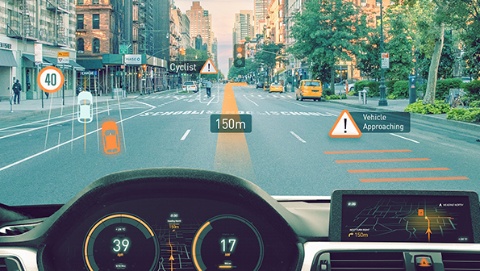
New Sideguard Assist uses the Mirror Camera display to warn drivers visually when the system detects for example a pedestrian or cyclists in the monitored zone on the co-driver's side of the truck.
The mirrorCam and the sideguard Assist are working together and enable to avoid collisions.
A Europe-wide progressive introduction of mandatory turn assist systems is planned only from July 2022 for new vehicle types and from July 2024 for new vehicles. This is why, in 2018, the Federal Ministry of Digital and Transport launched the Turn Assist Scheme to provide incentives at national level for a voluntary commitment to use turn assist systems.
Read more


